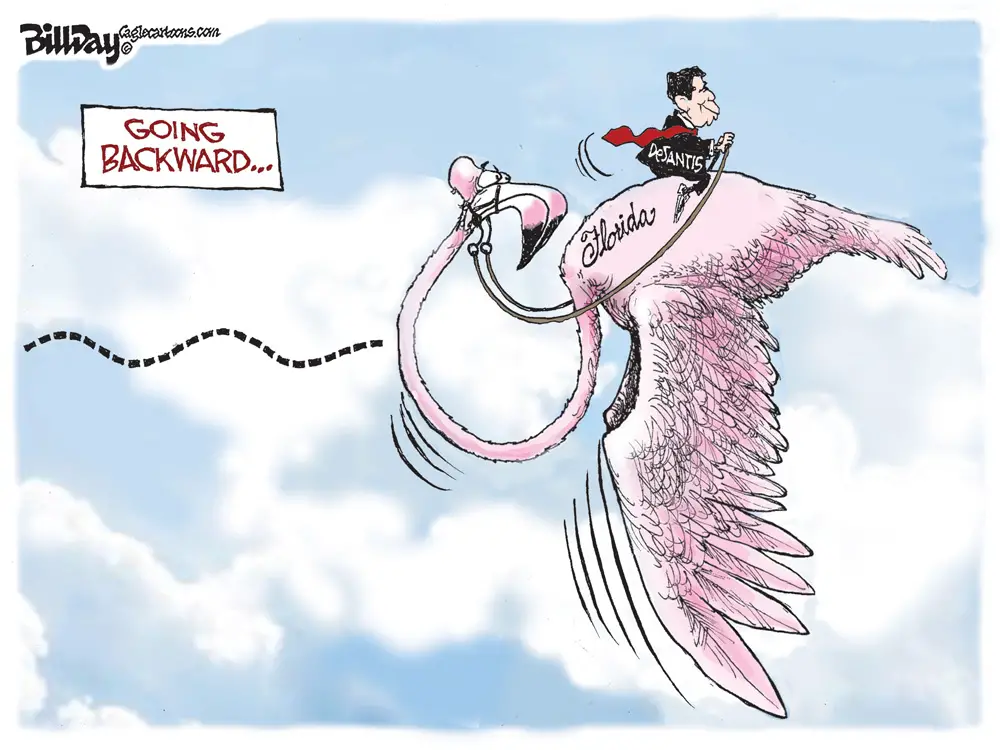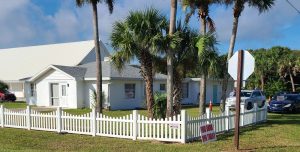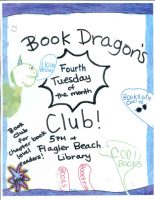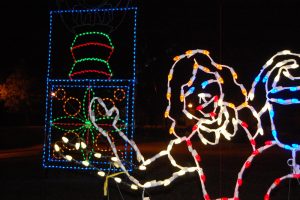
To include your event in the Briefing and Live Calendar, please fill out this form.
Weather: Sunny. Highs in the lower 80s. West winds around 5 mph, becoming east in the afternoon. Sunday Night: Mostly clear. Lows in the upper 50s. Southeast winds 5 to 10 mph, becoming south after midnight. See the daily weather briefing from the National Weather Service in Jacksonville here.
Today at a Glance:
Whitney Lab 5K, 8 a.m., River to Sea Preserve Trails, Marineland. Lace up your shoes for marine science!Join us as we commemorate 50 years of science and discovery at UF Whitney Lab with a 5k Race! Run, walk, or jog with us at the beautiful River to Sea Preserve trails (or anywhere with our virtual option) to celebrate this historic anniversary and support marine conservation. This year’s featured animal – the redfish (Sciaenops ocellatus)! All 5K proceeds will go to the Whitney Laboratory gift fund, a fund that powers the lab’s programming including community lectures, public education, facilities improvements, public events, and critical student experiences at the lab. It is essential to operating all the programs at the lab! Race limited to 200 participants. Cost: $40, and $45 on the day of the race. Register here.
Palm Coast Farmers’ Market at European Village: The city’s only farmers’ market is open every Sunday from noon to 4 p.m. at European Village, 101 Palm Harbor Pkwy, Palm Coast. With fruit, veggies, other goodies and live music. For Vendor Information email [email protected]
Daytona State College Orchestra Concert, 2:30 p.m. at the News-Journal Center, 221 N. Beach Street, Daytona Beach. An unforgettable afternoon where the harmonious blend of classical and contemporary melodies will envelop you in a world of musical enchantment. The program includes Grieg’s Piano Concerto and Peer Gynt Suite, with Soloist Alessandro Fonseca and Conductor Mauricio Cespedes.
‘Bonnie and Clyde, the Musical,’ at Daytona Playhouse: March 29, 30, April 4, 5, 6, 12, 13 at 7:30pm, March 31, April 7, 14 at 2:00pm. Tickets: $25, $24 and $15 depending on age. Book here. When Bonnie and Clyde meet, their craving for excitement and fame send them chasing their dreams. Forced to stay on the run, the lovers resort to robbery and murder to survive. As the infamous duo’s fame grows bigger, the end draws nearer in this exciting musical.
Grace Community Food Pantry, 245 Education Way, Bunnell, drive-thru open today from noon to 3 p.m. The food pantry is organized by Pastor Charles Silano and Grace Community Food Pantry, a Disaster Relief Agency in Flagler County. Feeding Northeast Florida helps local children and families, seniors and active and retired military members who struggle to put food on the table. Working with local grocery stores, manufacturers, and farms we rescue high-quality food that would normally be wasted and transform it into meals for those in need. The Flagler County School District provides space for much of the food pantry storage and operations. Call 386-586-2653 to help, volunteer or donate.
Al-Anon Family Groups: Help and hope for families and friends of alcoholics. Meetings are every Sunday at Silver Dollar II Club, Suite 707, 2729 E Moody Blvd., Bunnell, and on zoom. More local meetings available and online too. Call 904-315-0233 or see the list of Flagler, Volusia, Putnam and St. Johns County meetings here.
Storytime: Hemingway’s “Cat in the Rain” (1924): There’s always been various connections between Hemingway and cats, even in passing. This is one of them. Carlene Brennen in Hemingway’s Cats (2000) describes Hemingway’s young marriage to Hadley Richardson when she wanted a child and a cat. A child was out of the question: he was writing. She was lonely. At the time Hemingway was a reporter for the Toronto Star, writing from Europe. She had nothing to do. They both loved cats but he told her they were too poor to own one. They lived in a shabby rented room with beautiful views of Paris rooftops. Hemingway thought the room had belonged to Verlaine, where Verlaine had died. He worked. She paced. She got pregnant, unexpectedly. “The story was a tribute to Hadley, who was dealing with her first year of marriage, the loneliness it entailed, and her deep desire for motherhood,” Brennen writes. Brennen then cites Gioia Diliberto’s biography, Hadley, that found Hemingway basing the story on an incident in Rapallo in 1923, the little Mediterranean town near Genoa, where the couple spent some time when Hadley was two months pregnant. She saw a kitten hiding under a table, just as in the story. “I want a cat,” she is reported to have said in the biography, or in the story: Brennen doesn’t make a distinction. “I want a cat. I want a cat now. If I can’t have long hair or any fun I can have a cat.” Ernest actually gave her a small dog in her last month of pregnancy, and they both took to it. “Cat in the Rain” was part of the In Our Time collection published in 1924.
As in “The Quay at Smyrna,” as in much of Hemingway (as it’s been since his death), most of the story is in what’s not told, though in this case, between the affected prose and the Hemingway anchor attached to the story, it leaves a lot of room for wild interpretations. The biographical context of the story doesn’t help, except to shed some of the pretentious assumptions a critical reading of the story risks producing. To me, a little too obviously, the protectiveness for the cat is the basic maternal instinct, the more so since Hadley was gestating child and instinct. The opening scene-setting seems superfluous: the war monument, the palms, the Italians who come “from a long way off” to look at the monument, even Italy: they could have been on a hot tin roof for all we care, the story could have still been pulled off the same way but for Hemingway’s affectations and his desire to advertise that he’s been to an Italian seaside town with a war monument. The insistent rain is necessary to ensure that the cat needs to be sheltered from it, though wind, cold, sleet or afternoon heat might’ve had the same effect on most cats. Why the woman is referred to, twice, as a “girl” is unclear. Maybe that’s how Italians saw Americans. Why she can’t have long hair even more so: in the mid-20s? In Europe? Finally, the cat presented to her by the Italian maid may not be the one she’d seen, though given the incessant rain, it seems a quick check of her fur would reveal whether she’d been outside or not. The ambiguity seems more literary than meaningful, although isn’t it so with child: you never know what you’re going to get until it’s delivered. Or didn’t, anyway, back then, before the era of grotesque-dimensional ultrasounds.
This is too much: “Italians came from a long way off to look up at the war monument. It was made of bronze and glistened in the rain. It was raining. The rain dripped from the palm trees. Water stood in pools on the gravel paths. The sea broke in a long line in the rain and slipped back down the beach to come up and break again in a long line in the rain. The motor cars were gone from the square by the war monument. Across the square in the doorway of the café a waiter stood looking out at the empty square.” This is the sort of paragraph that makes Hemingway disciples swoon. This is the sort of paragraph that does not make me swoon. It just makes it clear how much of a one-trick wonder Hemingway was, and how much he demolished generations of writers who tried to be the next Hemingway. At least Camus had something to say in his minimalism. With Hemingway, the iceberg below the surface is hollow.
—P.T.
View this profile on Instagram
![]()
The Live Calendar is a compendium of local and regional political, civic and cultural events. You can input your own calendar events directly onto the site as you wish them to appear (pending approval of course). To include your event in the Live Calendar, please fill out this form.
December 2025
Flagler Beach United Methodist Church Food Pantry
Book Dragons, the Kids’ Book Club, at Flagler Beach Public Library
NAACP Flagler Branch General Membership Meeting
Rotary’s Fantasy Lights Festival in Palm Coast’s Town Center
Random Acts of Insanity Standup Comedy
Separation Chat: Open Discussion
The Circle of Light A Course in Miracles Study Group
Rotary’s Fantasy Lights Festival in Palm Coast’s Town Center
For the full calendar, go here.

But the books in the Hemingway house in Key West are mostly just moldy junk, shelf fillers, worthless books of the sort that can be gathered up at any Goodwill store. It’s hard to believe Hemingway had any hand in their selection. Though the house itself is gracious, well shaded, and spatially comfortable, the furniture and objets seem ill assembled, indifferently arranged, mediocre. It’s hard to imagine Ernest Hemingway being really comfortable in these rooms; there’s a stiffness here that’s a little off-putting. In the late twenties he first showed up here with his second wife, Pauline Pfeiffer. There were two wives yet to come, Martha Gellhorn and Mary Welsh. Any of the three, I suppose, could have been responsible for the furniture in the Key West house, with its nightclub-era feel. […] In my view the furnishings in the Key West house, as it sits today, are more suggestive of Hemingway’s worst prose. As I drove across south Florida and finally turned north, toward Tampa, I began to wonder if I had invested more in Hemingway’s early excellence as a writer than I had realized. I hadn’t read him carefully in at least thirty years and had, in the main, avoided reading much about him, since much of what has been written about him makes him seem insufferable. Edmund Wilson mentions in his journals that Hemingway had become insufferable; and yet Wilson also records how shocked and saddened he was by Hemingway’s suicide, mentioning what a loss he felt, for Hemingway had been one of the writers most important to Wilson’s generation. I was not exactly depressed by my visit to the Hemingway house–just disquieted. I chewed on this disquiet all the way across Florida and halfway up its length. The point may be that it’s always tricky to go near writers whose work you really like. They may turn out to have bad furniture, or tacky women, or both.
–From Larry McMurtry’s Roads (2000).



































Pogo says
@hemingway
https://www.google.com/search?q=hemingway
And also
https://worldpopulationreview.com/country-rankings/countries-currently-at-war
James says
In the end, Hemingway seems to have taken to cats, particularly the multi-toed kind…
https://www.hemingwayhome.com/our-cats
https://en.wikipedia.org/wiki/Polydactyl_cat
Curtis DeBerg says
I enjoy all things Hemingway. My next book, “Wrestling With Demons: In Search of the Real Ernest Hemingway,” will be released on June 1. Would your editors like an Advance Review Copy? See http://curtdeberg.com for details. Thank you.